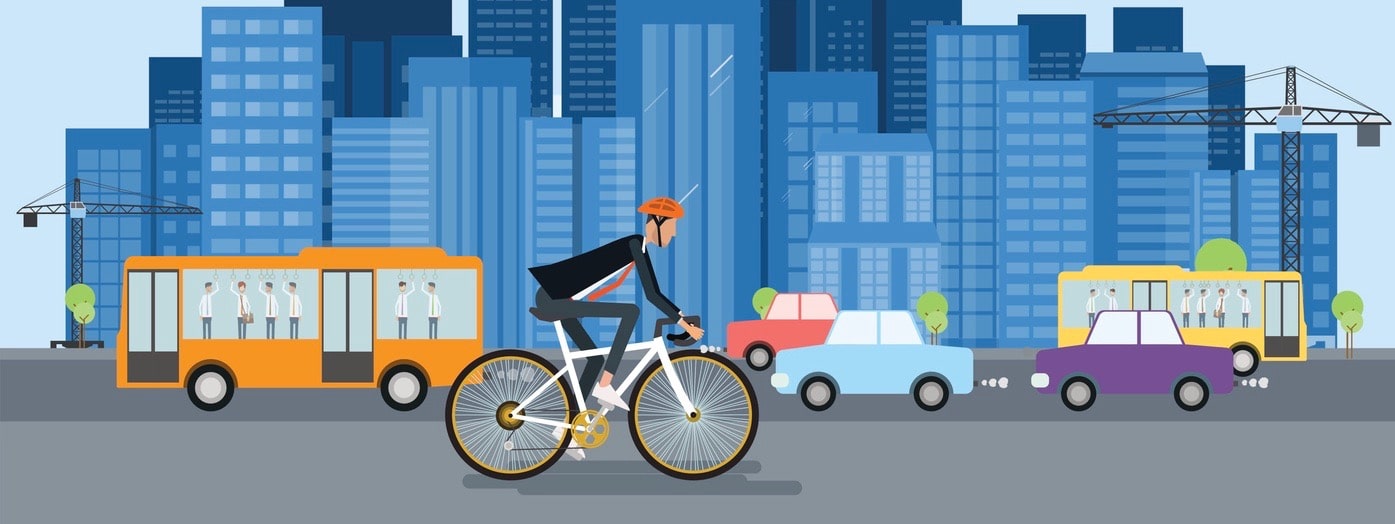The average American driver estimates spending nearly 10 hours per week behind the wheel, yet 29 percent of them have considered trading in their cars, trucks or SUVs in favor of other transportation options, according to a new study from global comms consultancy Ketchum.
The firm’s new Daily Ride Index found that cost is the main factor, with one-third (33 percent) of respondents claiming their vehicle is too expensive to operate. Convenience of alternative methods, such as biking, walking, or using subways and ride-sharing services, and environmental concerns are other high-ranking factors.
“While we remain a car-dominant culture, new forms of transportation have sparked reconsideration by many drivers. As our population increasingly moves towards cities and we focus on efficiency and simplification in all aspects of our lives, the opportunity for transportation services like ride-sharing, bike-sharing and even scooter-sharing services will only accelerate,” said Kevin Oates, partner and managing director of Ketchum’s Transportation group, in a news release. “What we see in this research is enthusiasm for new forms of transportation technology and services, but also hesitation. From a communications perspective, organizations have to acknowledge both to break out of niche into the mainstream.”
As many transportation companies focus on the purchasing trends of millennials and Gen Z, they may be overlooking the drivers of a future transportation revolution—Gen X
While 37 percent of millennials and 32 percent of Gen Zers say they have considered giving up their own vehicles, 44 percent of Gen Xers may be willing to hand over their keys. Only 13 percent of Baby Boomers have considered going car-free. Men are 2.5 times more likely to consider giving up their daily drive than women (41 percent vs. 16 percent).
“Although millennials and Gen Z represent a huge market for automakers, this study tells us we shouldn’t be dismissing the changing needs of Gen X, who still have tremendous purchasing power and many years of mobility ahead of them,” said Oates.
The study also revealed why drivers may be open to exploring new options—transportation-as-a-service is a way of life for 1 in 5 respondents
Nineteen percent indicated they use pay-as-you-go transportation options like public transit, ride-sharing apps, taxis, and on-demand bikes and scooter rentals on a daily basis. Access to these options are a defining factor for those considering going car-free—22 percent of respondents claim public transit meets all their travel needs. Other issues cited by car owners include the fact that driving often takes longer than other modes of transportation (27 percent) and that finding parking can be difficult (24 percent).
Despite their use of alternate transportation options, almost 9 in 10 respondents (87 percent) report they still use their personal vehicles to get around at least a few times per week. Walking is the second most common mode of transportation, with 62 percent getting from place to place by foot a few times per week. Alternate forms of transportation include biking (17 percent), bus (15 percent), taxi or ride sharing service (12 percent), train or subway (12 percent), motorcycle (11 percent), shared bike or scooter (10 percent), and paratransit (7 percent).
What drives them?
When it comes to car buying, Americans favor safety, mobile integration and more eco-friendly engine technology. One-quarter of the population (24 percent) believes collision avoidance systems (such as automatic braking) are the single most important automotive technology they are looking for. Bluetooth integration was selected by 12 percent of respondents, demonstrating the importance of safety on the minds of American drivers. In-car mobile wifi hotspots are also a top selling point, with 6 percent of respondents ranking it the most important feature in their next vehicle purchase.
In general, women view high-tech driving innovations with more skepticism than men:
- 59 percent of women are uncomfortable with the concept of a fully autonomous car, compared to 33 percent of men.
- 80 percent of women would be uncomfortable with a car that had no steering wheel, compared to 53 percent of men.
- 27 percent of women say they would be uncomfortable with windshields that integrate augmented reality, compared to 14 percent of men.
Newer forms of engine technology are still important to Americans
Car companies should be prepared for a wave of alternative-fuel shoppers. Nearly one-quarter (24 percent) of respondents said they are likely to consider buying an electric vehicle in the next 12 months, which is significantly higher than the less than 2 percent of new cars sold today that are electric.
When shopping for their next car, 12 percent of Americans said having either a hybrid, electric or hydrogen fuel cell option would be the most important factor. Half of respondents (52 percent) said they are likely to consider a traditional gasoline vehicle in the next 12 months, while 30 percent are likely to consider a hybrid and 21 percent will consider hydrogen.
“America’s love affair with cars is far from over, but more and more of us are considering a shift away from the traditional vehicles we grew up with,” said Oates. “As other transit models broaden our mobility and provide more efficient, convenient alternatives to driving, automotive companies will need to step up the pace to innovate in different ways and keep more Americans behind the wheel.”



